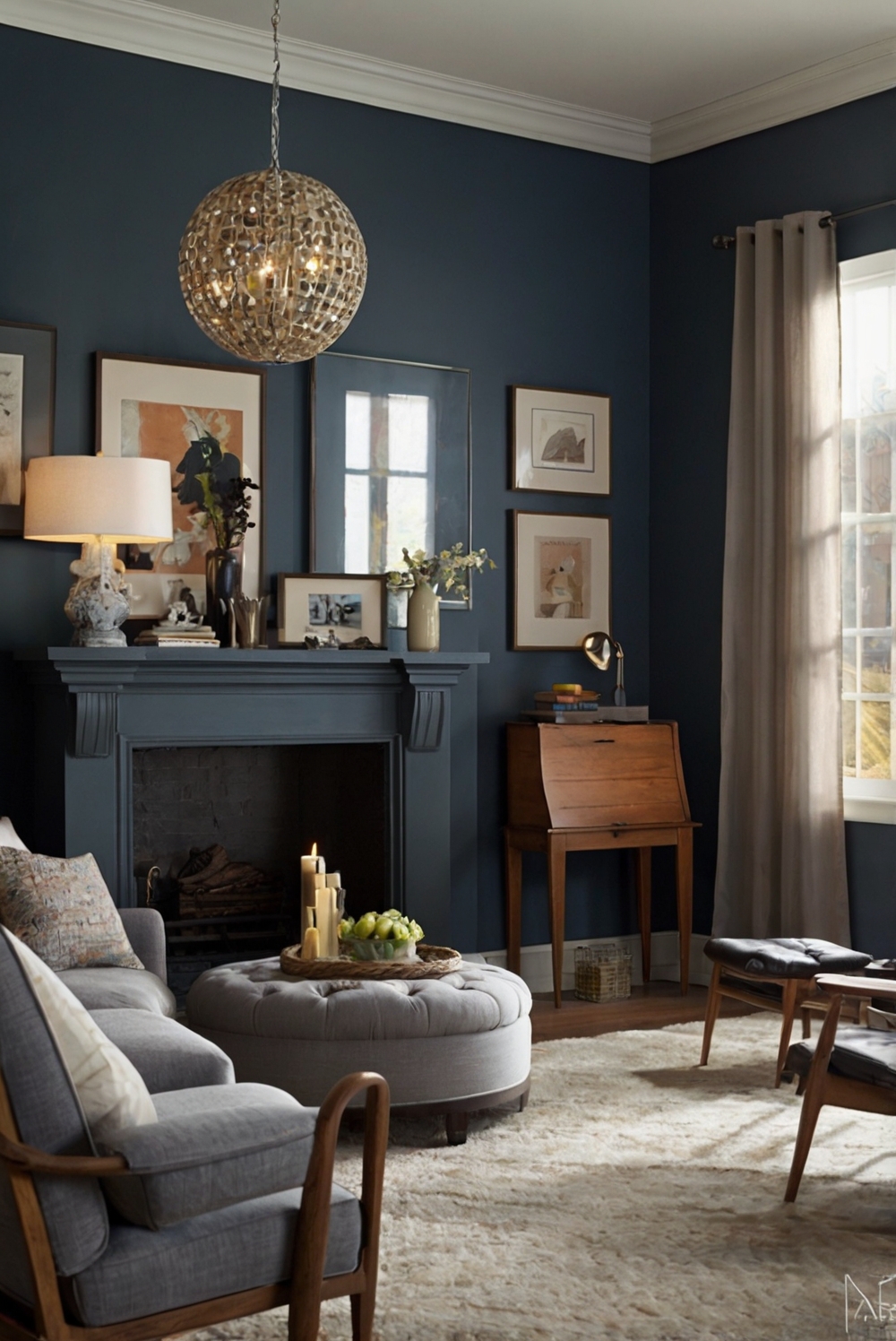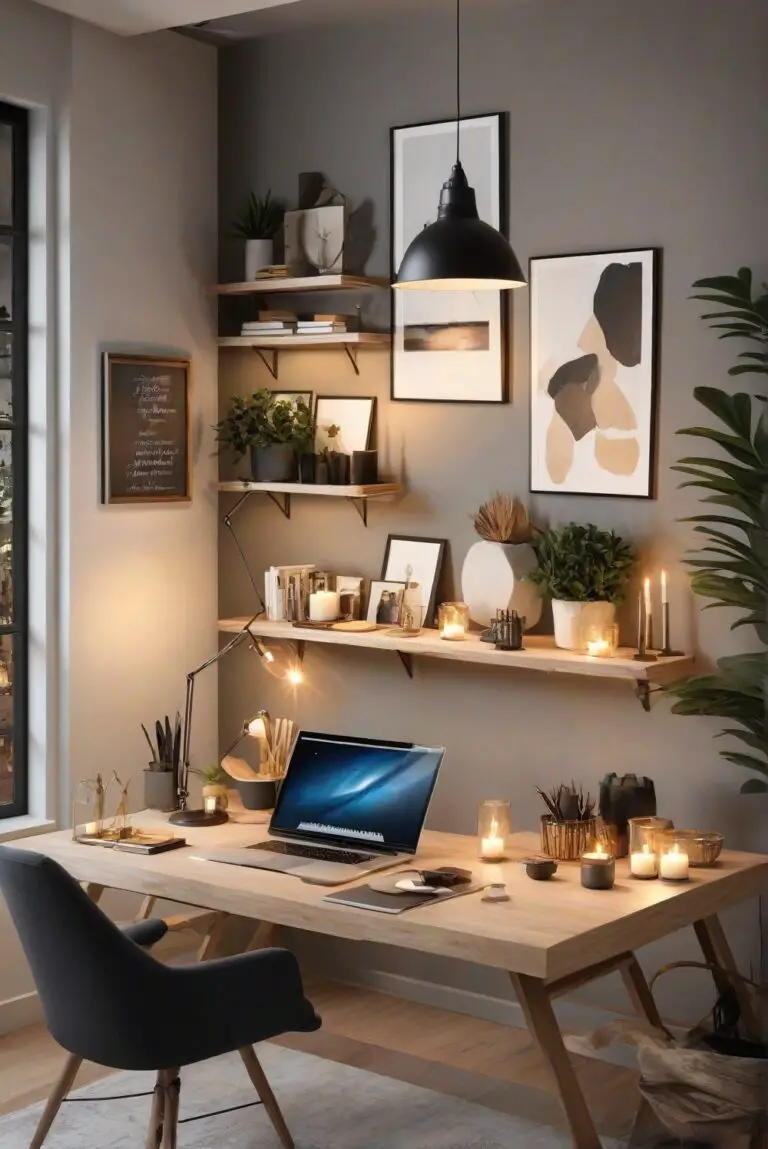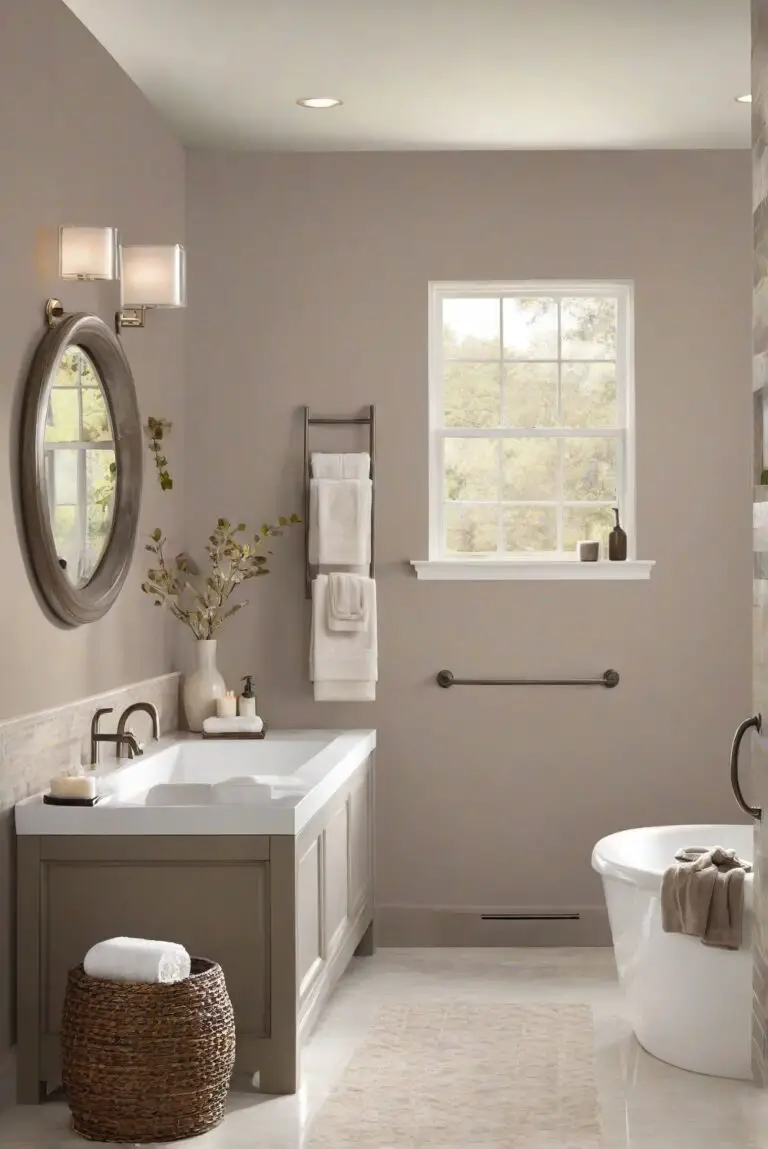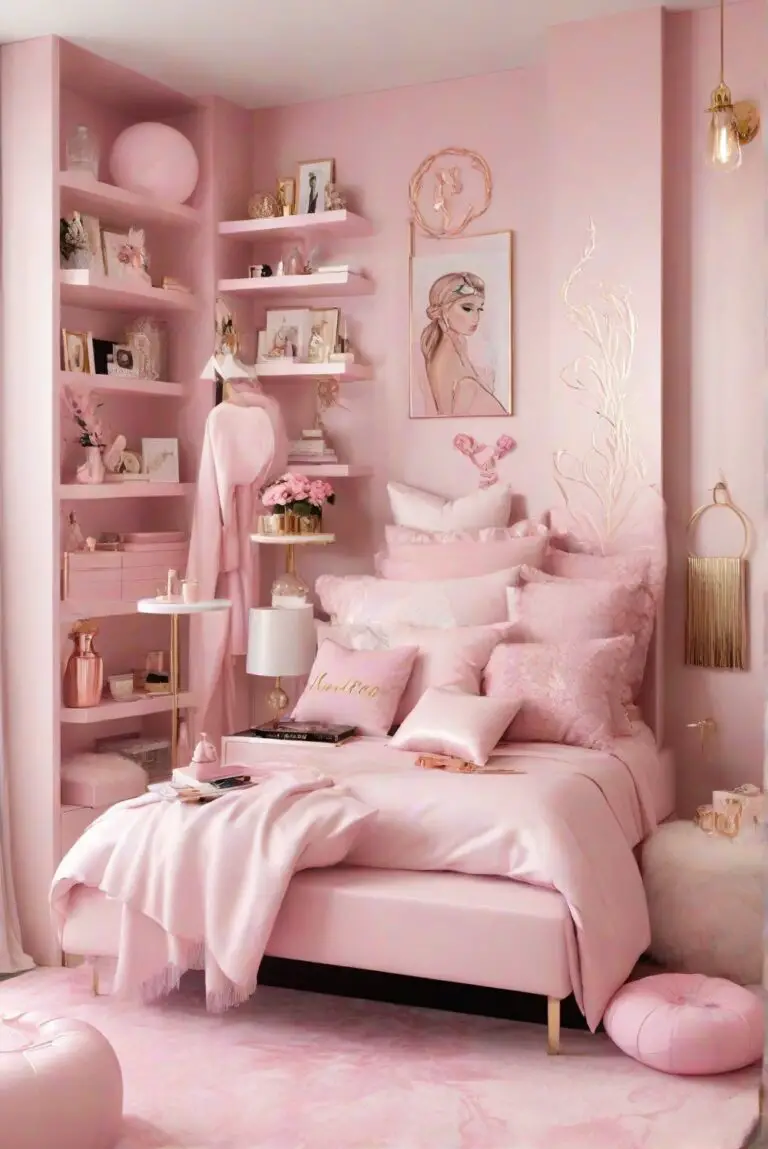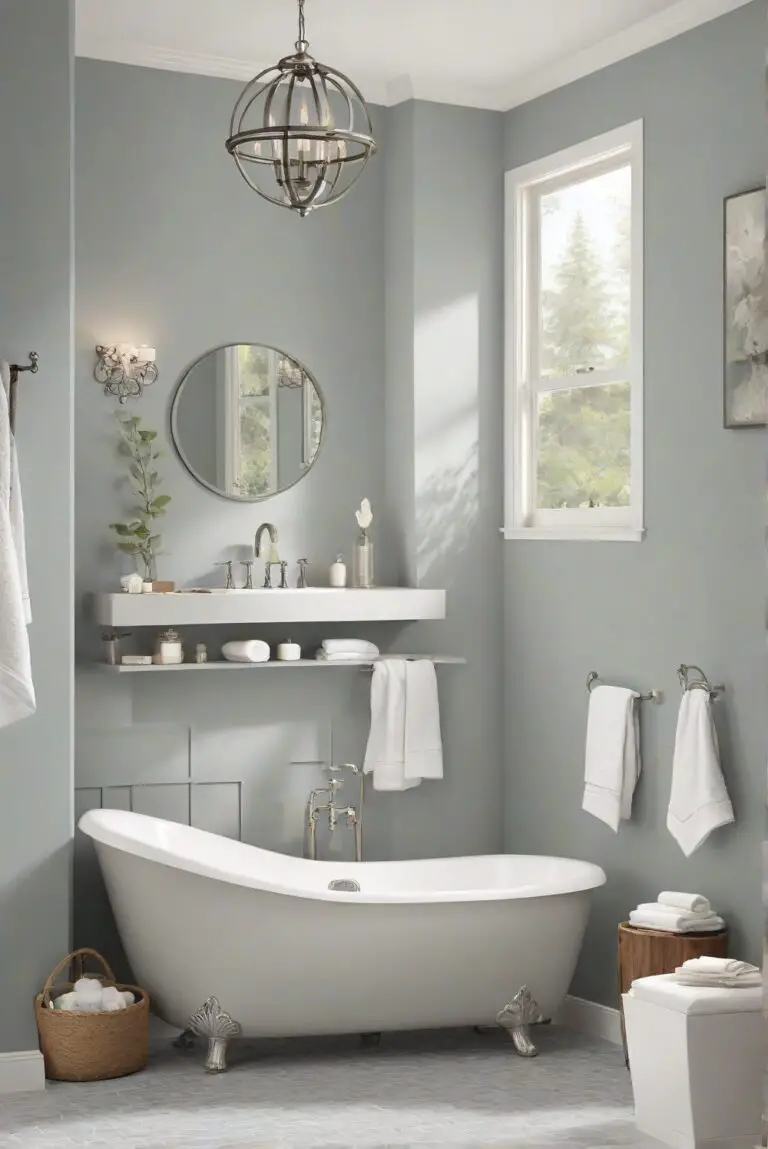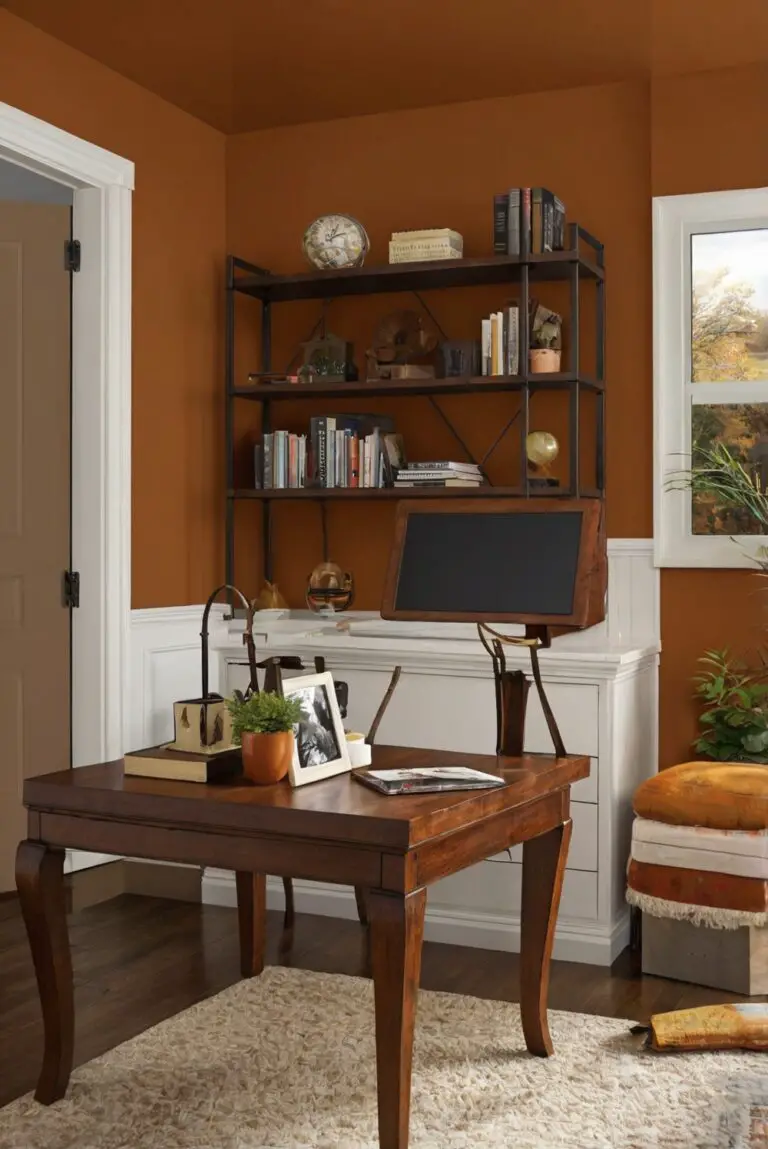Discover the magic of color gradients on walls to transform your living room into a dynamic space. Get inspired by this interior designer’s daily routine for the perfect touch.
**How to create a dynamic living room atmosphere with color gradients on the walls?**
To create a dynamic living room atmosphere with color gradients on the walls, start by selecting a color scheme that complements your furniture and decor. Use light colors for a spacious feel and dark colors for coziness. Consider using gradient paint techniques to blend colors gradually. Begin with a primer paint for walls to ensure a smooth finish. Experiment with different shades and textures to achieve the desired effect. Match the colors to the existing elements in the room for a cohesive look. Don’t forget to add accents like decorative wall art or mirrors to enhance the overall design.
Finally, maintain an organized approach by planning the layout and spacing of furniture beforehand to ensure a well-balanced and visually appealing living room.
How to blend different colors seamlessly to create a smooth gradient effect on my living room walls?
Creating a smooth gradient effect on your living room walls involves careful color selection and blending techniques. Start by choosing a color palette that transitions smoothly from one hue to another. Consider using colors that are adjacent on the color wheel for a harmonious blend. To achieve a seamless transition between colors, mix each adjacent color together to create intermediate shades. Apply the colors in overlapping layers, blending them together while the paint is still wet. This technique helps to soften the edges between colors and create a gradual gradient effect. Use a soft brush or sponge to blend the colors gently for a professional finish. Remember to step back and assess the overall look as you work to ensure a cohesive and balanced gradient across the entire wall.
What is the best way to choose colors for a gradient wall design that complements my existing furniture and decor?
When selecting colors for a gradient wall design, consider the existing furniture and decor in your living room. Choose colors that harmonize with the dominant hues in your furnishings to create a cohesive look. Take cues from the colors of your upholstery, curtains, rugs, and artwork to guide your color selection. Opt for shades that complement rather than clash with the existing color scheme. If you have neutral furniture, you have more flexibility in choosing a gradient color scheme. Experiment with different shades and tones to find a combination that enhances the overall aesthetic of the room. Consider creating a mood board or using online tools to visualize how the gradient colors will interact with your existing decor before committing to a specific color scheme.
Can I create a DIY color gradient effect on my walls, or should I hire a professional painter for this project?
Creating a DIY color gradient effect on your walls is possible with the right tools, techniques, and patience. If you have experience with painting and a steady hand, you can achieve professional-looking results on your own. However, if you are unsure about your painting skills or want a flawless finish, hiring a professional painter may be a better option. Professional painters have the expertise and equipment to create seamless color gradients with precision. They can also recommend the best paint products and techniques for your specific wall surface. Consider your comfort level with painting and the complexity of the gradient design when deciding whether to tackle the project yourself or enlist the help of a professional.
How to ensure a smooth transition between each color in the gradient?
To ensure a smooth transition between each color in the gradient, it is essential to blend the colors seamlessly. Start by applying each color in horizontal bands on the wall, slightly overlapping the edges to create a soft transition. Use a blending brush or sponge to feather out the edges where the colors meet, creating a gradual shift from one hue to the next. Work quickly while the paint is still wet to achieve a seamless blend. Avoid letting the paint dry between color transitions, as this can result in visible lines or harsh edges. Step back periodically to assess the overall gradient and make adjustments as needed. By paying attention to detail and taking your time to blend each color effectively, you can achieve a smooth and cohesive transition between the different shades on your wall.
What types of paint finishes work best for creating color gradients on walls?
When creating color gradients on walls, the choice of paint finish can significantly impact the final result. Matte or eggshell finishes are ideal for achieving a smooth and seamless gradient effect. These finishes have low reflectivity, allowing the colors to blend together seamlessly without highlighting imperfections. Satin or semi-gloss finishes can also work well for gradient walls, providing a subtle sheen that enhances the depth of the colors. Avoid using high-gloss finishes for gradient walls, as they can reflect light unevenly and create a patchy appearance. Before starting your gradient painting project, test different paint finishes on a small section of the wall to see how they interact with the colors and lighting in your room. Choose a finish that complements the overall aesthetic of your space and enhances the gradient effect.
Can I use stencil patterns to enhance the color gradient effect on the walls?
Stencils can be a creative way to enhance the color gradient effect on your walls and add visual interest to the design. Choose a stencil pattern that complements the gradient colors and scale of your wall. Position the stencil over the painted gradient and secure it in place with painter’s tape. Use a small brush or sponge to apply a contrasting color through the stencil openings, creating a pattern that overlays the gradient background. Experiment with different stencil designs and colors to achieve a custom look that complements your living room decor. Stencils can be used to create geometric shapes, floral motifs, or abstract patterns that enhance the overall aesthetic of the gradient wall. Be sure to allow the base gradient colors to dry completely before applying the stencil to prevent smudging or bleeding of the paint.
What are the benefits of using color gradients on walls to create a dynamic living room atmosphere?
Using color gradients on walls can transform your living room into a dynamic and visually engaging space. Gradients add depth and dimension to the walls, making the room feel larger and more expansive. They can create a sense of movement and flow, drawing the eye across the space and adding visual interest. Color gradients also allow you to play with light and shadow, as different hues interact with natural and artificial lighting sources throughout the day. By incorporating gradients into your living room design, you can create a unique focal point or accent wall that reflects your personal style and enhances the overall ambiance of the room. Whether you opt for subtle tonal shifts or bold contrasting colors, gradients can elevate the design of your living room and make a lasting impression on guests.
Why is it important to consider natural lighting when choosing color gradients for living room walls?
Natural lighting plays a crucial role in how color gradients appear on living room walls. The intensity and direction of natural light can affect the perceived colors and transitions in the gradient. When selecting colors for your gradient walls, consider how they will look in different lighting conditions throughout the day. Test paint samples on your walls and observe how they change under morning, afternoon, and evening light. Keep in mind that north-facing rooms tend to receive cooler light, while south-facing rooms get warmer light. Understanding how natural light interacts with your chosen gradient colors will help you create a harmonious and balanced look in your living room. Additionally, consider the artificial lighting in the room, such as lamps and overhead fixtures, as these can also influence the appearance of the color gradient.
How can I maintain the color gradient walls to keep them looking fresh and vibrant over time?
To maintain the vibrancy and freshness of your color gradient walls, proper care and maintenance are essential. Regularly dust the walls with a soft, dry cloth or a duster to remove any surface dirt or debris. Avoid using harsh cleaning chemicals or abrasive materials that could damage the paint finish. In the case of smudges or stains, gently spot clean the affected areas with a mild soap and water solution. Be cautious not to scrub too vigorously, as this can rub off the paint or alter the gradient effect. Touch up any areas of the wall that may have faded or become discolored over time to keep the colors looking vibrant and uniform. By taking care of your color gradient walls with gentle cleaning and occasional touch-ups, you can ensure that they remain a focal point of your living room for years to come.
Key Takeaways:
– Choosing a color palette that transitions smoothly is key to creating a seamless gradient effect on living room walls.
– Consider the existing furniture and decor when selecting gradient colors to ensure a cohesive look.
– DIY color gradients are achievable with the right tools and techniques, but hiring a professional painter may yield flawless results.
– Blending colors seamlessly and using the right paint finish are essential for a smooth transition between each gradient color.
– Stencils can enhance the gradient effect on walls by adding pattern and visual interest.
– Color gradients on walls can make a living room feel larger, more dynamic, and visually engaging.
– Natural lighting influences how gradient colors appear on walls, so consider different lighting conditions when choosing colors.
– Regular maintenance, gentle cleaning, and occasional touch-ups are key to keeping color gradient walls looking fresh and vibrant over time.

